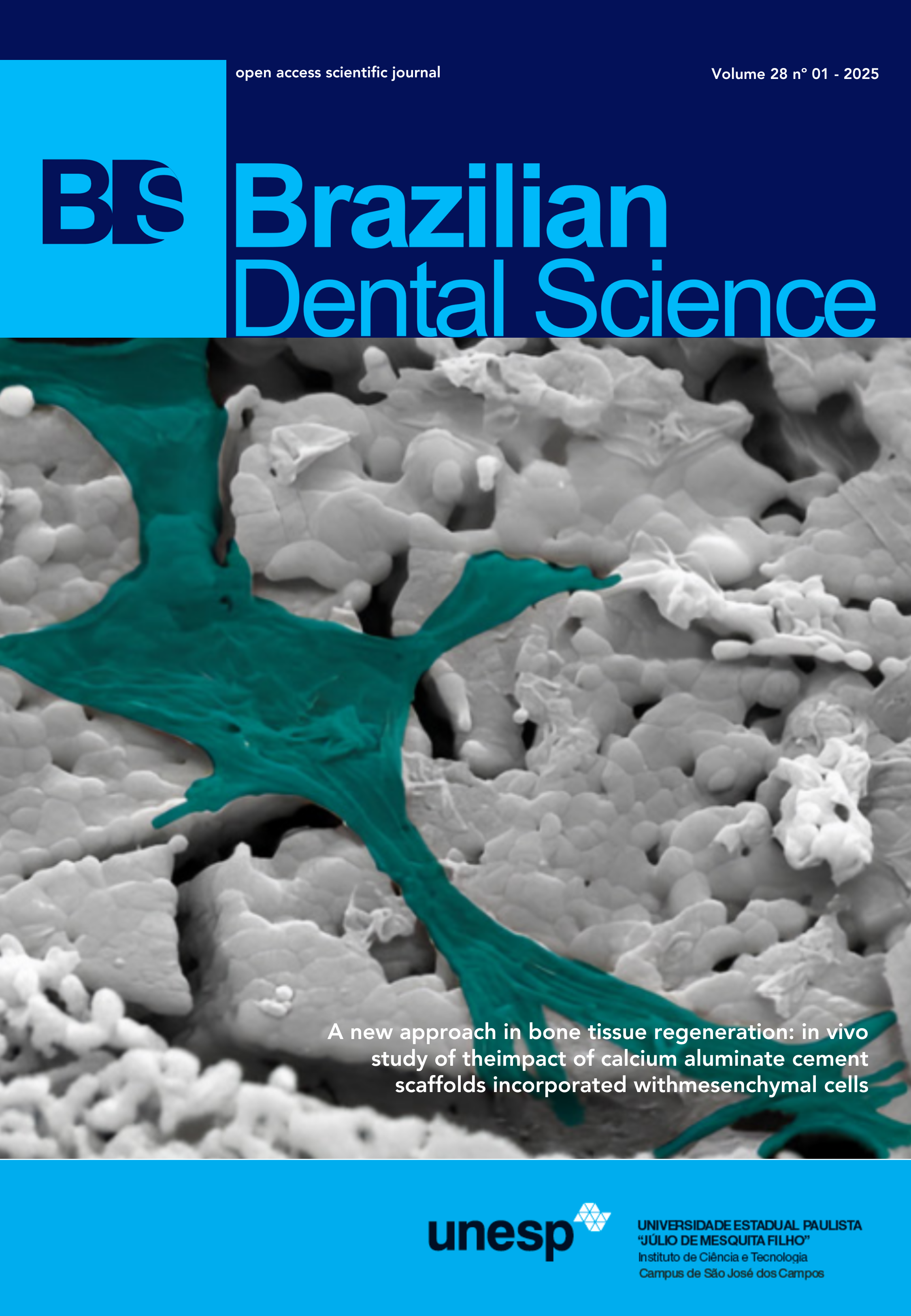Comparative study of conventional and 3D printed denture base polymers: effect of low-pressure plasma as a surface treatment method
DOI:
https://doi.org/10.4322/bds.2025.e4568Abstract
Objective: To compare flexure strength (FS) and surface roughness properties of conventional heat polymerized (CHP) and three-dimensionally printed (3DP) denture base resins and study the effect of plasma surface treatment on these properties. Material and Methods: Rectangular resin samples (65 × 10 × 3.3 mm3) were fabricated from two material groups: CHP and 3DP resins (N=24/material group). Each group was divided into control and treated groups (n=12/subgroup) to study their flexural strength and surface roughness properties. A comparative evaluation of these properties was performed between the control groups at first. Afterwards, treated groups were exposed to low pressure atmospheric plasma treatment and were compared with control (untreated) samples regarding changes in their properties both before and after plasma treatment. Results: The surface properties of control CHP groups showed higher FS (p<0.0001) and lower surface roughness (p=0.0002) than the 3DP group. Generally, when compared to the control group of each material, the plasma-treated CHP group and the treated 3DP group showed significant increase in FS (p<0.0001). Surface roughness significantly increased in treated group of CHP (p<0.0001) but had no significant change in treated 3DP group (p=0.068). Conclusion: Conventional heat polymerized denture base resins possess superior flexural strength and lower surface roughness compared to 3D printed resins. Plasma surface treatment is an effective method to strengthen both CHP and 3DP denture base resins and roughen (micro-etch) CHP resin surfaces toward further chemical reactions.
KEYWORDS
Acrylic denture base; Plasma; Polymethyl methacrylate; Surface treatment; Three-dimensional printing.
Downloads
Published
How to Cite
Issue
Section
License
Copyright (c) 2025 Brazilian Dental Science

This work is licensed under a Creative Commons Attribution 4.0 International License.
Brazilian Dental Science uses the Creative Commons (CC-BY 4.0) license, thus preserving the integrity of articles in an open access environment. The journal allows the author to retain publishing rights without restrictions.
=================




























